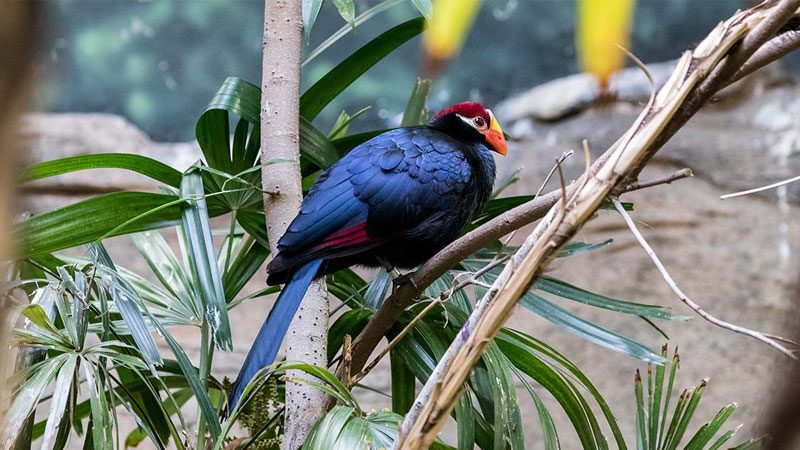Welcome to Lincoln Park Zoo’s new web app! Share your feedback

Violaceous Turaco
McCormick Bird House
Did You Know?
- Violaceous turacos aren’t the best flyers, but easily navigate their forest habitat by running along branches. They are aided by several semi-zygodactyl toes; these toes are reversible, allowing the bird extra balance where they need it.
- They drop a lot of food, which allows other animals to enjoy their leftovers and helps to distribute seeds across their environment.
- When threatened, these birds freeze. This helps them camouflage with their surroundings
Don’t See the Animals?
Why aren’t animals visible at all times? To promote positive animal welfare, we provide animals with choices. They can choose to spend time in areas that are out of public view.

Take an Animal Home with You
Overview
Scientific Name: Musophaga violacea
Class: Birds
Diet: Fruit, seeds, and nuts
Range: Central and West Africa
Endangered Status: Least Concern
More Information
Violaceous turacos are birds around 30 inches long, which weigh less than a pound. They are covered in dark purple feathers except for the head, which has red feathers and a white streak behind their eyes. They also have a yellow shield on their forehead. This is the only turaco species without a crest.
These birds live in savannas and forests but can also be found in human-made gardens and other environments. Violaceous turacos are more social than other turacos and may gather in groups of a dozen or so when traveling. They make shallow nests or platforms of loosely woven sticks and lay up to three eggs inside. After a 25-day incubation, hatchlings are born and fledge within the month.
